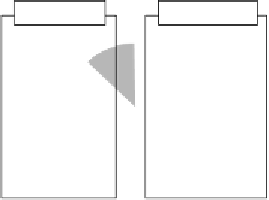Geoscience Reference
In-Depth Information
monitoring, a well-structured data management system and various fall back
scenarios, which allowed for smaller safety margins, a continuous adjustment of
extrapolated predictions of the consolidation process and residual settlements, and
- most important - a significant shorter construction period. The alliance started in
1999 and completed its task successfully on time, in November 2003, and it
achieved a reduction of about 10% of the original project cost. The major part of
the success of the project had its origin in a sound risk management strategy for
covering the geotechnical aspects. The benefit was shared amongst all the parties
involved.
E
RISK MANAGEMENT PROCESS
: G
EO
Q
“Transparency of the uncertainty in geotechnical works will facilitate proper risk
assessment and risk sharing by use of appropriate forms of contracts, avoiding
inflexibility, indecision and time overrun”. This statement was one of the
conclusions of the Terzaghi Oration 2005. This single sentence not only connects
uncertainty to risk assessment, it also adds some essential non-technical aspects,
such as risk sharing and contracts, which cannot be neglected for a successful
construction project (Van Staveren). Cummings and Kenton reported in 2004
about several case studies of failures in geotechnical engineering, engineering
geology and geophysics. Their conclusion is remarkable. It is important, they state,
to recognize that almost all completed projects did not fail. Only the most
egregious failures get wide public attention. Failures are usually not caused by
natural events, such as earthquake, flood or landslide that immediately precede a
failure. Failures are caused by human error that allows marginally stable or
unstable conditions to exist through substandard investigation, dishonesty and
deceit, approval of substandard reports by reviewing agencies, and political
influence.
research
education
piles
foundation
no
adjacency
adjacency
walls
general
risk
management
specific
ground
survey
sealing
cause knowledge diagnosis
Figure 8.10 Building pit damage; insufficient ground survey (10%), insufficient adjacency
survey (20%), missing knowledge (10%), available knowledge not properly applied (60%)
In 2008, Van Tol reviewed 40 cases of building pit damages and his conclusion
is that in many cases the required knowledge was available but not applied (Fig
8.10). Proper risk management will make significant savings. In 2011, CUR Build
and Infra published Report 232 on Construction Failure, emphasising that presence
of proper skill at the construction site and risk awareness of the project







Search WWH ::

Custom Search